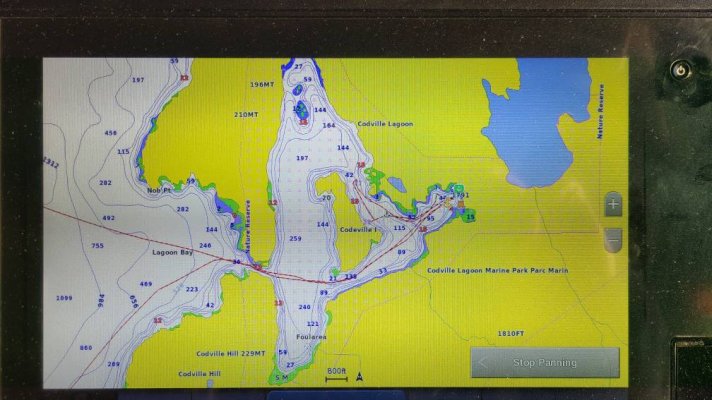guy with a boat
Guru
We are hoping to transit BC to move our boat to Alaska and I'm working on a float plan.
Pending the appropriate approvals, we intend to move through as quickly as we safely can do (80 mile days), and are hoping to stop in secure anchorages and avoid populated areas to the extent possible. I'm familiar enough with the area inside Vancouver Island to plan our stops accordingly. Its the area north of VI that I can use some help with.
We expect to go by the most direct route, which is a fairly well-beaten path. In another year, I would include stops at docks or floats to avoid some sketchy anchorages with mining debris on the bottom, or steep sided small anchorages.
Its the area between Blunden Harbor and Foggy Bay that I'm working on now. Some suggestions for safe anchorages along this path would be helpful and appreciated. We are only stopping to sleep so area attractions are not a factor. Safe, secure, close to the route, and hopefully free of anchor-snagging debris are the qualifications.
thanks
Pending the appropriate approvals, we intend to move through as quickly as we safely can do (80 mile days), and are hoping to stop in secure anchorages and avoid populated areas to the extent possible. I'm familiar enough with the area inside Vancouver Island to plan our stops accordingly. Its the area north of VI that I can use some help with.
We expect to go by the most direct route, which is a fairly well-beaten path. In another year, I would include stops at docks or floats to avoid some sketchy anchorages with mining debris on the bottom, or steep sided small anchorages.
Its the area between Blunden Harbor and Foggy Bay that I'm working on now. Some suggestions for safe anchorages along this path would be helpful and appreciated. We are only stopping to sleep so area attractions are not a factor. Safe, secure, close to the route, and hopefully free of anchor-snagging debris are the qualifications.
thanks

